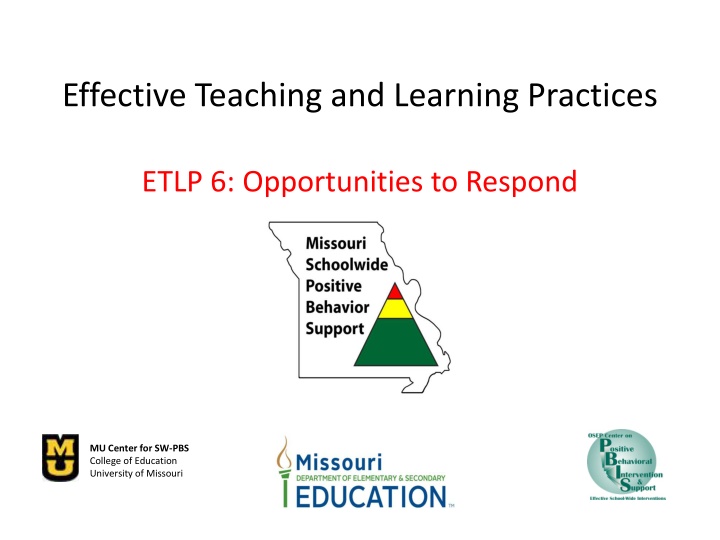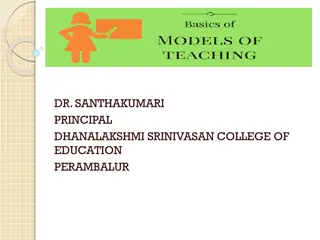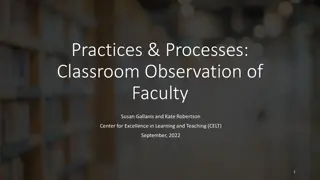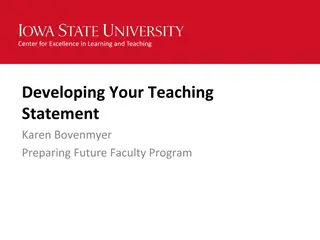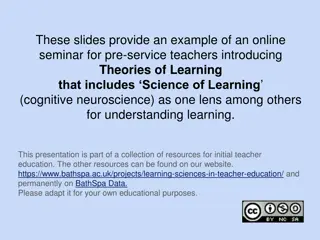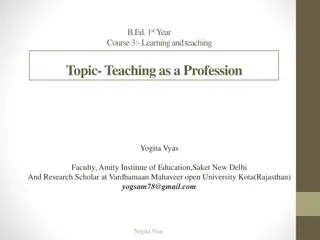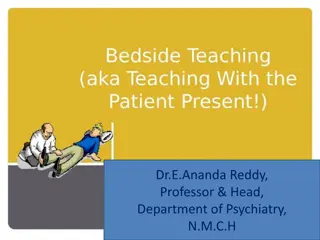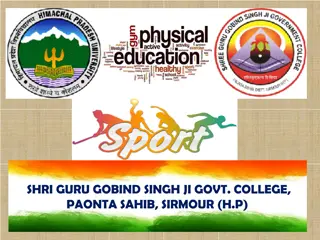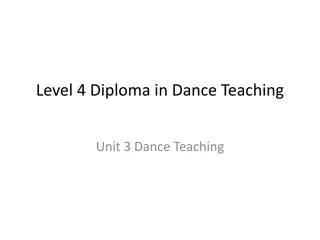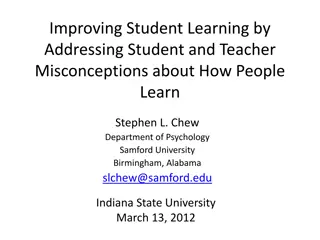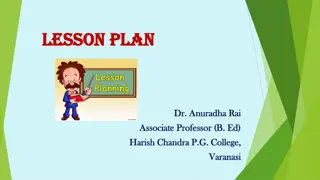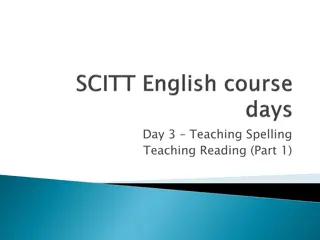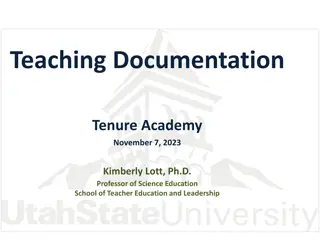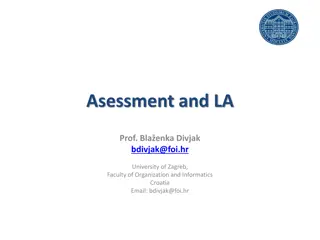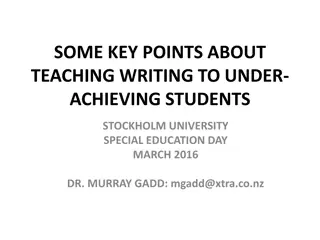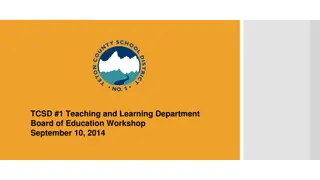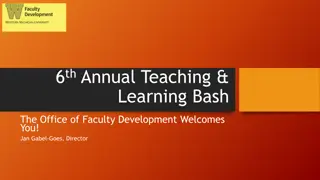Effective Teaching and Learning Practices: Opportunities to Respond
Explore the importance of providing students with Opportunities to Respond (OTR) in the classroom. Learn about verbal and non-verbal strategies that teachers can employ to prompt student responses effectively. Discover the benefits of OTR for enhancing on-task behavior, academic performance, and reducing disruptions. Gain insights into response rates guidelines and various response strategies to engage students and promote learning.
Download Presentation

Please find below an Image/Link to download the presentation.
The content on the website is provided AS IS for your information and personal use only. It may not be sold, licensed, or shared on other websites without obtaining consent from the author.If you encounter any issues during the download, it is possible that the publisher has removed the file from their server.
You are allowed to download the files provided on this website for personal or commercial use, subject to the condition that they are used lawfully. All files are the property of their respective owners.
The content on the website is provided AS IS for your information and personal use only. It may not be sold, licensed, or shared on other websites without obtaining consent from the author.
E N D
Presentation Transcript
Effective Teaching and Learning Practices ETLP 6: Opportunities to Respond MU Center for SW-PBS College of Education University of Missouri
Session Outcomes At the end of today s session, you will be able to Explain the benefits of providing students with Opportunities to Respond (OTR) List and describe verbal and non-verbal strategies teachers can use to prompt student response MO SW-PBS
Effective Classroom Practices 1. Classroom Expectations 2. Classroom Procedures & Routines 3. Encouraging Expected Behavior 4. Discouraging Inappropriate Behavior 5. Active Supervision 6. Opportunities to Respond (OTR) 7. Activity Sequencing & Choice 8. Task Difficulty MO SW-PBS
Opportunities to Respond (OTR) Teacher behavior that prompts or solicits a student response (verbal, written, gesture). MO SW-PBS
The Value of Providing OTR Opportunities to Respond On-task behavior and academic performance Disruptions MO SW-PBS
Guidelines for Response Rates Teacher talk 40% 50% New > 4-6/minute 80% accuracy Review > 8-12/minute 90% accuracy MO SW-PBS
Response Strategies Verbal Non-verbal MO SW-PBS
Response Strategy Consideration MO SW-PBS
Using Wait Time or Think Time 3 seconds MO SW-PBS
Verbal Response Strategies Choral Individual MO SW-PBS
Verbal Response Strategies - Individual Response Random Solicitation of Responses Calling on one student at a time during small group reading = an average of 72% on-task behavior. Some students were on- task only 50% of the time. Calling on students randomly and reinforcing correct responding = an average of 88% on-task behavior. Lowest student on-task behavior was 76%. MO SW-PBS
Ms. Finchs first graders have just finished listening to a story about a young boy named Howard. Ms. Finch puts the book on her lap, holds up her hand, and says, Class, get ready to tell me the main character in today s story. Think 3, 2, 1, drops her hand as a signal, and the students chime in, Howard! Howard is correct, exclaims Ms. Finch. Way to go! She asks ten more quick questions some about the setting and main idea. Last one. The problem Howard faced today was finding his lost dog. Is that true or false? Think 3, 2, 1. She signals and the student eagerly respond, False! The students laugh and so does Ms. Finch. You got it, that s false. Tell me why that s false. She waits 3 seconds, then calls on James who often requires more think time and who has just raised his hand to answer. MO SW-PBS
Considerations for Using Choral Responding 1. Develop questions with only one right answer that can be answered with short, 1-3 word answers. 2. Provide a thinking pause or wait time of at least three seconds between asking the question and prompting students to respond. 3. Use a clear signal or predictable phrase to cue students to respond in unison. 4. Use a brisk, lively pace. 5. Provide immediate feedback about the group response. MO SW-PBS
Using Choral Responding Preparation is key! MO SW-PBS
Non-Verbal Response Strategies MO SW-PBS
Non-Verbal Response Strategies Low Tech Low Effort White boards Response cards Signaling or movement activities Low Tech Moderate Effort Guided notes Peer Assisted Learning Strategies High Tech Clickers/Cell phone Shared documents (e.g., Google Docs) MO SW-PBS
Non-Verbal Response Strategies Response Cards https://www.plickers.com/ Free and subscription accounts MO SW-PBS
Non-Verbal Response Strategies Signaling or Movement Activities MO SW-PBS
Non-Verbal Response Strategies MO SW-PBS
Non-Verbal Response Strategies: Using Technology MO SW-PBS
Non-Verbal Response Strategies MO SW-PBS
Non-Verbal Response Strategies: Developing Guided Notes 1. Identify key facts, concepts, or relationships that could be left blank for students to fill in. 2. Consider inserting concept maps or a chart, diagram, or graph to help with understanding. 3. Provide students with formatting clues such as blank lines, numbers, bullets, etc. 4. Plan for small amounts of writing throughout to ensure students can attend to the instruction and take notes. MO SW-PBS
Activity: Identify OTR Read the following scenario and identify OTR. Shortly after science class started, the teacher announced, We have a small block of ice and the same sized block of butter. Tell your neighbor which one would melt first. A few seconds later the teacher said, Please write down in one sentence an explanation for your answer. A few minutes later, the teacher told students to share with their neighbor what they had written. Shortly thereafter, the teacher called on one student to tell the class her answer. The teacher then asked the class to raise their hand if they agreed with the answer. Then the teacher asked students to give a thumbs down if anyone disagreed. Colvin, 2009 MO SW-PBS
Activity: Identify OTR Shortly after science class started, the teacher announced, We have a small block of ice and the same sized block of butter. Tell your neighbor which one would melt first. A few seconds later the teacher said, Please write down in one sentence an explanation for your answer. A few minutes later, the teacher told students to share with their neighbor what they had written. Shortly thereafter, the teacher called on one student to tell the class her answer. The teacher then asked the class to raise their hand if they agreed with the answer. Then the teacher asked students to give a thumbs down if anyone disagreed. Colvin, 2009 MO SW-PBS
Session Outcomes At the end of today s session, you will be able to Explain the benefits of providing students with Opportunities to Respond (OTR) List and describe verbal and non-verbal strategies teachers can use to prompt student response View and discuss examples of OTR in the classroom MO SW-PBS
